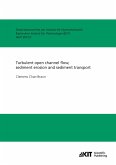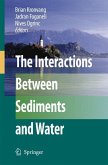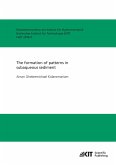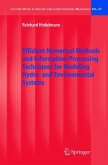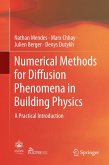The assessment of sediment transport and involved processes is a major issue in hydraulic and river engineering. Common approaches for sediment transport which rely on empirical relations are not able to describe the underlying physics in detail and they are not suitable to study the generally complex sediment transport processes. However, numerical models which are able to reproduce and to resolve the involved processes are not very common, since they would have to imply the rather complex fluid-sediment interaction. In the present work, a numerical model which is based on a Lagrangian approach with force-coupling, namely the combination of two meshfree particle methods, is presented. The fluid is modelled by a continuum approach which is discretised by the smoothed particle hydrodynamics method. The sediment particles are represented by the discrete element method. The definition of the interface and the exchange of forces between the fluid and sediment grains are inherent to the applied approaches. The present contribution shows the potential of the presented model for the detailed investigation of sediment transport processes as well as for complex practical applications.
Bitte wählen Sie Ihr Anliegen aus.
Rechnungen
Retourenschein anfordern
Bestellstatus
Storno


